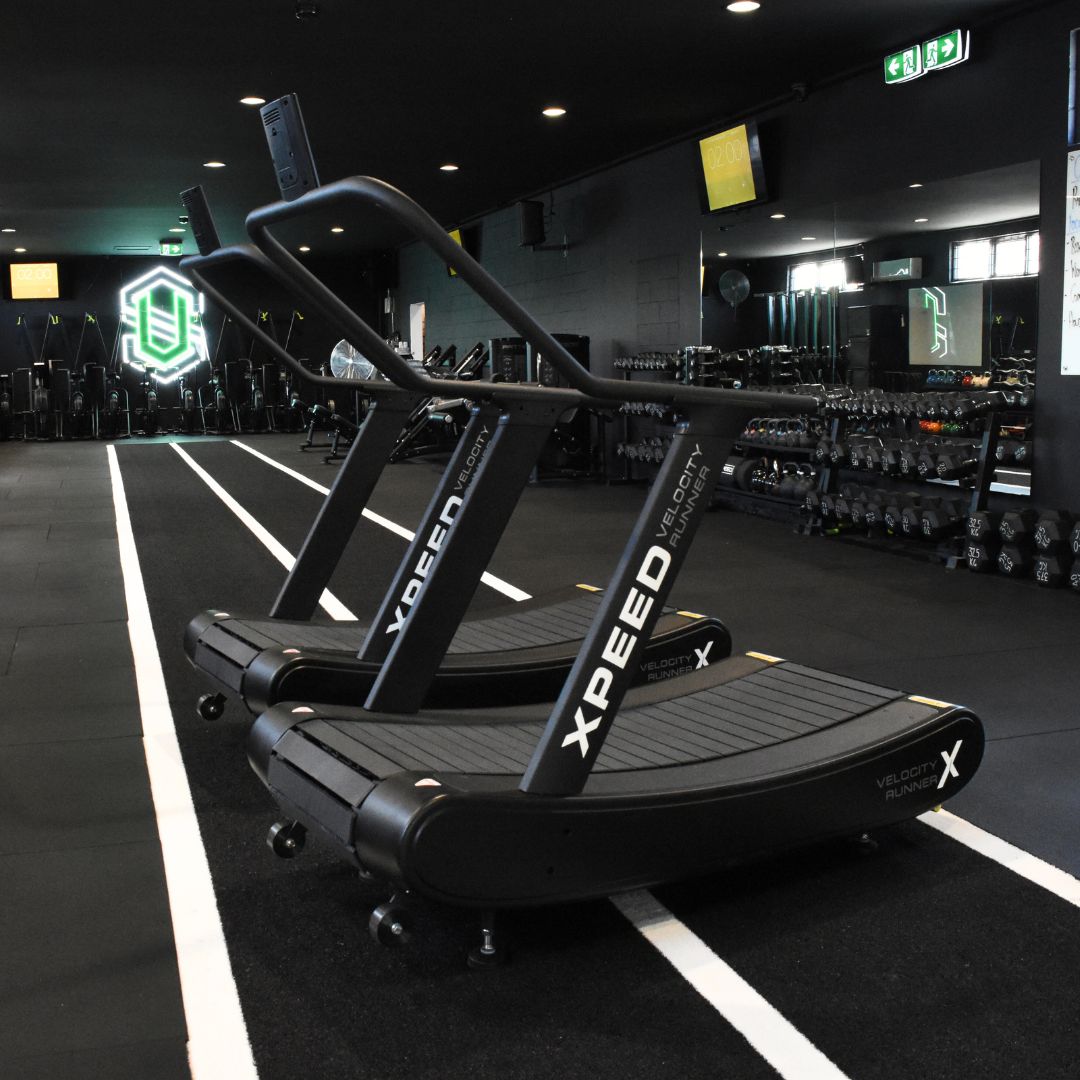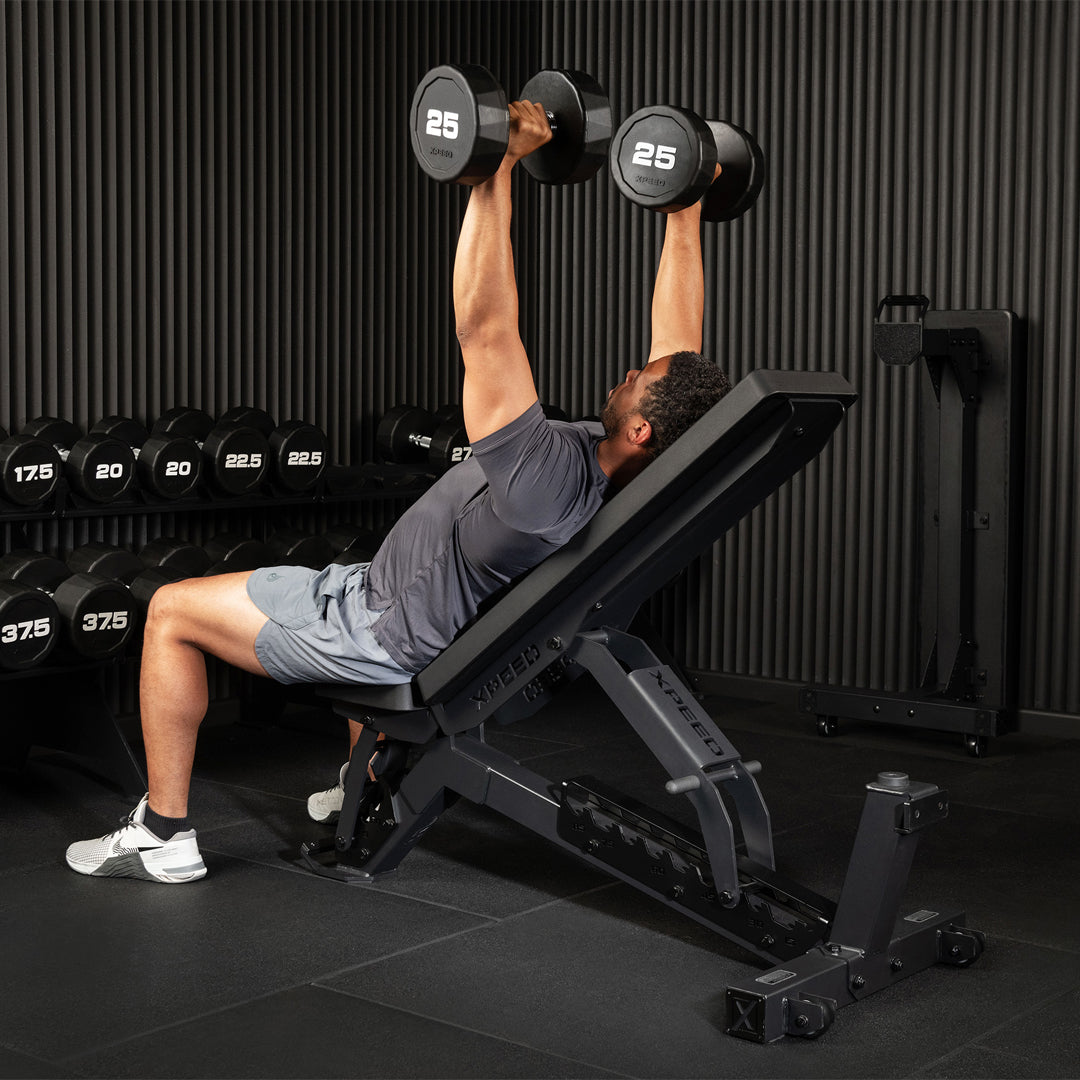The most important factor in your training is probably not what you think!
Let’s breakdown what an ideal weight training and cardio programme might look like.
Weight Training (Strength Training):
Frequency: For most people, training with weights 3-5 days a week is generally optimal. This allows for enough frequency to stimulate muscle growth and strength improvements while providing adequate recovery time.
A common split is a 3-day full-body workout routine, where you train your whole body each session, such as Monday, Wednesday and Friday. More advanced individuals might use a 4- or 5-day split, targeting different muscle groups on different days, allowing for more volume and specialisation. So what ‘optimal’ means for strength training depends on your goals, eg hypertrophy, weight loss, sport specific goals.
If we take a goal of muscle growth or hypertrophy as the goal - training would involve 4-6 days a week. This higher frequency allows you to target muscle groups more frequently, promoting muscle growth. Example: You could follow a split routine where you work different muscle groups on different days, such as chest and triceps on Monday, back and biceps on Wednesday, and legs and shoulders on Friday. Then, repeat the cycle the following week.
Key Principles for Hypertrophy:
- Focus on resistance training with moderate to heavy weights.
- Use a variety of exercises targeting different muscle groups.
- Incorporate progressive overload by increasing weight, reps, or sets over time.
- Ensure proper nutrition with a slight caloric surplus and adequate protein intake to support muscle growth.
On the other hand if weight loss is the goal, funnily enough people often default to cardiovascular exercise as a primary focus. However, High-Intensity Interval Training (HIIT) is a powerful approach for weight loss that incorporates resistance training elements. HIIT workouts, feature short bursts of high-intensity exercise followed by brief recovery periods, effectively burn calories and stimulate an afterburn effect known as Excess Post-Exercise Oxygen Consumption (EPOC). The only problem with HIIT is that it’s often done in loud environments that feel like a nightclub, except the DJ is shouting workout instructions to you. That being said, it still has it's benefits! Resistance exercises within HIIT help preserve lean muscle mass, which is crucial for a higher metabolism, making it easier to shed excess weight. This style of training combines cardio and resistance training in dynamic, enjoyable workouts and it can be adapted to various fitness levels, making it a versatile choice for those looking to achieve weight loss goals. It’s one of the reasons F45, BFT and Orange Theory took off around the world, it’s fast, fun and built around a community. However, you can have too much of a good thing. Overtraining in HIIT can lead to central nervous system fatigue, which can result in decreased performance, irritability and difficulty with concentration. Interestingly, this is an apt description of me before my morning coffee. So at a maximum 3 HIIT sessions a week is optimal.
Optimal frequency for cardio training
Frequency: The optimal frequency for cardio training depends on your goals and how your body recovers from the type of cardio that you’re doing. For overall wellness, anyone would benefit from at least 150 minutes of moderate-intensity aerobic exercise or 75 minutes of vigorous-intensity exercise per week, spread over 3-5 days. I’ll add here that walking is the most underrated form of exercise going around.
What does a week of cardio training look like? You could do 30 minutes of moderate-intensity cardio, such as brisk walking or cycling, on 5 days a week. Alternatively, you can do 20 minutes of vigorous-intensity cardio, like running or high-intensity interval training (HIIT), on 3 days a week, complimented by walking of the other days. It's important to find a balance that suits your schedule and helps you meet your fitness goals. Remember, it has to be sustainable and achievable.
Things To Consider
Your training frequency should align with your goals. If your primary goal is building muscle, more days of strength training might be beneficial. If you're focused on weight loss and cardiovascular health, more frequent cardio sessions could be essential.
Adequate rest is crucial to prevent overtraining and reduce the risk of injuries. Listen to your body and ensure you have rest days or active recovery days as needed.
The most important factor is consistency. Consistency is key. It's better to have a sustainable and consistent workout routine that you can maintain over the long term rather than overloading yourself and burning out.
It's essential to remember that individual preferences and constraints, such as your fitness level, available time and recovery capacity, play a significant role in determining your optimal training frequency. Personally I have 3 kids so my house often resembles a Zoo Monday - Friday, ideally I like to do a strength session 3 days a week, however some weeks all I'll get to do is walk. And that's ok. As you progress and adapt to your training routine, you may need to adjust the number of days per week accordingly based on life! I always recommend consulting with a fitness professional or personal trainer as they can also help tailor a plan to your specific needs and goals.
Lastly, big thanks to Taylor for the great question and your kind words about Xpeed.
Taylor Evans: I have always been happy with equipment purchased from Xpeed and the staff are always friendly.
 Written by Xpeed Brand Manager, Simon Mitchell. Simon has a Bachelor of Human Movement, is a certified FMS trainer and has worked in the fitness industry since 2003. Simon started his fitness journey as a trainer with iNform Health and Fitness before moving into commercial radio and then back into fitness with Bodyism in the United Kingdom and Australia. A career highlight was being one of Daisy Ridley's personal trainers on Star Wars IX - The Rise Of Skywalker.
Written by Xpeed Brand Manager, Simon Mitchell. Simon has a Bachelor of Human Movement, is a certified FMS trainer and has worked in the fitness industry since 2003. Simon started his fitness journey as a trainer with iNform Health and Fitness before moving into commercial radio and then back into fitness with Bodyism in the United Kingdom and Australia. A career highlight was being one of Daisy Ridley's personal trainers on Star Wars IX - The Rise Of Skywalker.
















